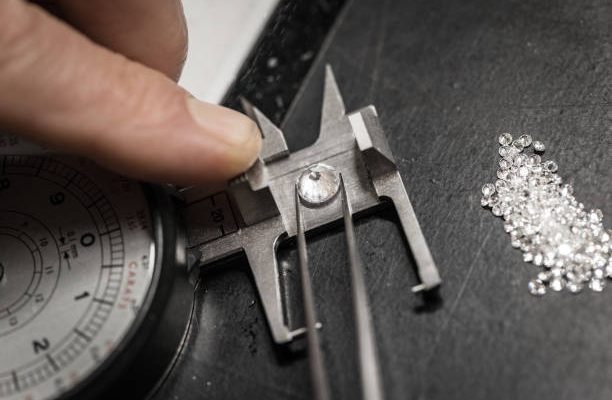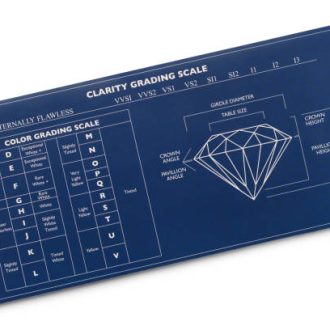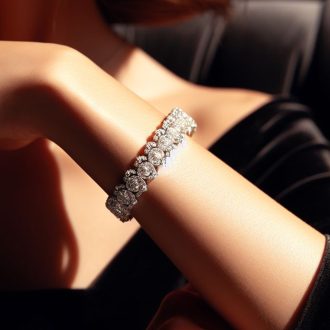
In the dynamic realm of diamonds, lab-grown diamondshave emerged as a captivating and contentious subject. This article delves into key aspects surrounding lab-grown diamonds, exploring their composition, strength, market value, and ethical considerations.
Lab-grown diamonds, created through advanced technological processes, prompt a closer examination of their composition. We explore the nuances of their formation, comparing their chemical and physical attributes with naturally mined diamonds.
The strength and durability of lab-grown diamonds are critical considerations as they gain prominence in the jewelry market. This article navigates scientific evaluations and industry standards to provide insights into the practical aspects of owning and wearing these synthetic gems.
An examination of the market value of lab-grown diamonds is essential, exploring how they fare economically against their naturally occurring counterparts and the factors influencing their perceived value. This discussion delves into the economic dynamics of the diamond industry.
Ethical and environmental dimensions are crucial aspects of the lab-grown diamond discourse. Advocates highlight their sustainability, while critics raise concerns about the environmental impact of the manufacturing process. This article aims to provide a balanced understanding of the ethical implications associated with choosing lab-grown diamonds.
This article offers a concise guide to the world of lab-grown diamonds, covering their composition, strength, market value, and ethical considerations. It aims to unravel the complexities that define their place in the diamond industry
The Rise of Lab-Grown Diamonds: Shaping a Sustainable FutureShaping the Future: The Ascendancy of Lab-Grown Diamonds in a Changing Market
In today’s diamond market, lab-grown diamonds, also called synthetic or cultured diamonds, have gained significant attention. Crafted in controlled environments to mirror natural diamond formation, their rise is driven by ethical and environmental concerns tied to traditional diamond mining.
Lab-grown diamonds offer a sustainable and ethically sound alternative, eliminating the environmental impact of large-scale mining and addressing concerns about fair labor practices. Additionally, the controlled production allows for customization in size, color, and clarity, providing consumers with a wider range of options.
As consumer preferences shift towards sustainability and ethical sourcing, lab-grown diamonds continue to reshape the industry. This trend reflects not only a response to environmental and ethical concerns but also a testament to technological advancements and changing perceptions in the diamond market.
Lab-Grown Diamonds: A Evolutionary Journey from Mid-Century Experiments to 21st Century Innovation
The concept of lab-grown diamonds traces its roots back several decades, with initial experiments dating to the mid-20th century. However, it is the remarkable strides in technology over recent years that have propelled their popularity and reshaped the diamond industry.
In the mid-20th century, scientists began experimenting with creating diamonds in laboratory settings, aiming to replicate the natural processes that occur deep within the Earth. These early endeavors laid the groundwork for subsequent breakthroughs, setting the stage for a transformative era in diamond production.
The 21st century has witnessed unprecedented advancements in the field of diamond synthesis, marked by refined techniques and innovative technologies. These breakthroughs have not only enhanced the efficiency of lab-grown diamond production but have also elevated the quality and characteristics of the resulting gems.
Understanding the history of lab-grown diamonds provides valuable insights into the evolution of diamond production. From early experiments to the current state of cutting-edge technology, this journey underscores the continuous quest for sustainable, ethical, and customizable alternatives in the dynamic landscape of the diamond market.
Lab-Grown Diamonds: Ethical, Innovative, and Accessible Choices for a Sustainable Future
Conflict-Free Assurance: Lab-grown diamonds are inherently free from associations with conflicts, providing consumers with peace of mind and ethical sourcing.
Consistency and Transparency:The controlled production environment ensures consistent quality and transparency, addressing variations found in natural diamonds.
Innovative Designs and Customization: Lab-grown diamonds allow for precise customization, fostering creative and personalized designs that might be challenging with natural diamonds.
Price Accessibility: These diamonds often come at a more accessible price point, making them an attractive option without compromising quality or ethics.
Technological Advancements: Ongoing technological progress promises further innovations, solidifying lab-grown diamonds as a sustainable, responsible, and technologically progressive choice.
Diamonds of Tomorrow: Lab-Grown Brilliance, Sustainability, and Ethical Excellence
Lab-grown diamonds are precisely engineered in controlled laboratory environments, possessing the same chemical and physical characteristics as natural diamonds. This identical composition ensures they exhibit the same brilliance and hardness, making them virtually indistinguishable from their naturally occurring counterparts.
Growth Process:The growth process of lab-grown diamonds involves replicating the conditions under which natural diamonds form. This is achieved through advanced methods such as High Pressure High Temperature (HPHT) or Chemical Vapor Deposition (CVD). These techniques emulate the geological forces and carbon crystallization processes that occur deep within the Earth, resulting in diamonds with identical qualities to those mined from the earth.
Sustainability in Diamond Production:Lab-grown diamonds represent a sustainable approach to diamond production. Unlike traditional diamond mining, which often involves significant environmental disruption and social concerns, the controlled creation of lab-grown diamonds minimizes ecological impact. This sustainable method aligns with growing consumer preferences for environmentally conscious products.
Conflict-Free Assurance:Lab-grown diamonds provide a guarantee of being conflict-free. Unlike some naturally mined diamonds that may originate from regions associated with conflicts and ethical concerns, the controlled and transparent production process ensures that lab-grown diamonds are free from such associations. This assurance addresses ethical considerations and resonates with consumers seeking socially responsible choices.
Customization and Precision in Diamond Characteristics:Lab-grown diamonds offer a high degree of customizationin terms of size, color, and clarity. The controlled laboratory conditions allow for precise manipulation of these characteristics, providing consumers with a range of options and the ability to choose diamonds that meet their specific preferences. This level of customization sets lab-grown diamonds apart, offering a unique and personalized experience in selecting these precious gems.
Lab-Grown Diamonds: Pioneering a New Era of Ethical Elegance and Environmental Responsibility
Lab-grown diamonds offer lots of advantages, contributing to their growing popularity:
Ethical Sourcing:By sidestepping traditional mining practices, lab-grown diamonds eliminate concerns associated with unethical practices in the diamond industry. Consumers can confidently choose these gems, knowing they support ethical sourcing and responsible production.
Environmental Stewardship:Lab-grown diamonds contribute to a reduced environmental footprint compared to traditional mining operations. The controlled laboratory environment minimizes habitat disruption, pollution, and energy consumption, aligning with the global push for eco-friendly practices.
Cost-Effectiveness:Lab-grown diamonds often present a more cost-effective option for consumers. The controlled production process and reduced environmental impact contribute to lower costs, making these diamonds an attractive choice for those seeking affordability without compromising on quality or ethical considerations.
Innovative Designs and Customization:The controlled conditions in which lab-grown diamonds are created allow for unparalleled customization. Consumers can choose from a variety of sizes, colors, and clarities, fostering creative and personalized designs that cater to individual preferences. This flexibility adds a unique dimension to the appeal of lab-grown diamonds in the jewelry market.
Consistency in Quality:Lab-grown diamonds exhibit a high level of consistency in terms of quality and characteristics. This predictability, often challenging to achieve in natural diamonds, provides consumers with assurance and transparency in their diamond purchases.
As the demand for ethical, sustainable, and customizable optionscontinues to rise, lab-grown diamonds stand out as a contemporary and conscientious choice, offering a myriad of benefits that extend beyond the traditional allure of these precious stones
Summary
In the realm of fine jewelry, lab-grown diamonds have emerged as a compelling and ethical alternative. Understanding their production methods, benefits, and potential pitfalls empowers consumers to make informed decisions aligned with their values. Meticulously crafted in controlled environments, these diamonds mirror natural brilliance while addressing concerns related to unethical mining practices and reducing environmental impact. Navigating this evolving landscape requires awareness of common mistakes, ensuring that consumers approach their purchases with clarity. The rise of lab-grown diamonds represents a shift where ethics, environmental consciousness, and customization options shape consumer choices, providing a brilliant yet responsible choice in the world of luxury.



